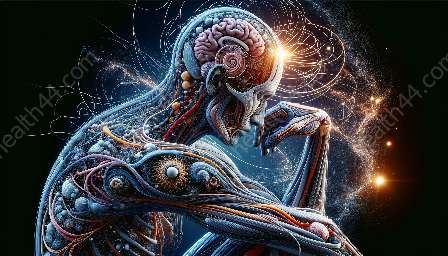Developmental anatomy offers a fascinating insight into the intricate processes that shape human development and is a crucial aspect of both anatomy and health education. Understanding the principles of developmental anatomy is essential for medical training and education. This comprehensive guide aims to explore the various aspects of developmental anatomy in a comprehensive, engaging, and informative manner.
Embryonic Development
Embryonic development is a pivotal stage in the formation of the human body. It begins with the fusion of the sperm and the egg, leading to the formation of a zygote. This zygote undergoes rapid cell division and develops into a blastocyst, which implants itself in the uterine wall. Over the subsequent weeks, the blastocyst further differentiates into the three primary germ layers - ectoderm, mesoderm, and endoderm. This process establishes the foundations for the development of various organ systems.
Organogenesis
Organogenesis marks the next phase of developmental anatomy, during which the rudimentary structures formed during embryonic development undergo further specialization and organization to form distinct organs. For example, the mesoderm gives rise to the heart, liver, kidneys, and other internal organs, while the ectoderm differentiates into the nervous system, skin, and related structures. Understanding the intricate processes of organogenesis is vital for comprehending the anatomy of these organs and their associated functions in the human body.
Fetal Development
As embryonic development transitions into fetal development, the structural and functional complexity of the developing human body increases significantly. During this stage, the focus shifts to the growth and maturation of the developing organ systems. Specific milestones, such as the formation of limbs, development of the brain, and maturation of the respiratory and digestive systems, define this remarkable phase of human development. Medical practitioners and educators must be well-versed in the nuances of fetal development to provide effective healthcare services and training.
Importance in Anatomy and Health Education
Developmental anatomy forms the cornerstone of anatomical knowledge. It provides insights into the origins and structural organization of various body systems, laying the foundation for understanding their function and pathology. Health education benefits immensely from a deep understanding of developmental anatomy, as it equips healthcare professionals, educators, and students with the knowledge and skills necessary to comprehend the complexities of human development, growth, and potential abnormalities.
Medical training relies heavily on developmental anatomy to cultivate a comprehensive understanding of the human body. Whether it's learning the intricacies of organ development or recognizing congenital anomalies, medical students and professionals must grasp the principles of developmental anatomy to excel in their respective fields. Mastery of developmental anatomy contributes to the provision of optimal patient care, accurate diagnoses, and effective treatment strategies.
Relevance to Medical Education
Medical education places great emphasis on developmental anatomy to produce competent and empathetic healthcare practitioners. By delving into the intricate processes of human development, medical students gain a holistic understanding of the dynamic changes that occur within the human body from embryonic stages to adulthood. This comprehensive insight is crucial for diagnosing developmental disorders, understanding the manifestations of diseases across different age groups, and providing tailored care that aligns with the unique anatomical and physiological characteristics of patients at various developmental stages.
Clinical Applications
Understanding developmental anatomy is essential for healthcare professionals in clinical settings. It involves recognizing and managing congenital anomalies, developmental disorders, and age-related changes in anatomy. From pediatric care to geriatrics, an in-depth understanding of developmental anatomy enhances the ability to provide personalized care, anticipate developmental milestones, and address potential developmental challenges.
Challenges in Understanding Developmental Anatomy
While developmental anatomy is an incredibly intricate and captivating field, it presents challenges in terms of its vast scope and the dynamic nature of human development. Keeping abreast of the latest research findings and developments in the field is vital for educators and medical practitioners. Additionally, visualizing and comprehending the complexities of embryonic and fetal development requires innovative educational tools and immersive learning experiences.
Conclusion
Developmental anatomy serves as a bridge between the fundamental principles of anatomy, health education, and medical training. Through a deep understanding of the processes that shape human development, professionals can provide superior healthcare, contribute to medical advancements, and enrich the education of future healthcare professionals. Embracing the captivating nuances of developmental anatomy is essential for navigating the complexities of the human body and promoting holistic health and well-being.


